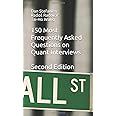Stihl backpack sprayers are a popular choice for professionals and homeowners alike, offering a powerful and efficient way to tackle a variety of spraying tasks. But with several models available, choosing the right one can feel overwhelming. This comprehensive guide answers the most frequently asked questions about Stihl backpack sprayers, helping you make an informed decision.
Why is Torque so Important in a Backpack Sprayer?
You might be thinking, “Torque? Isn’t that for cars and trucks?” While you’re right that torque is crucial in automotive applications, it plays a similarly vital role in backpack sprayers. Torque, in this context, refers to the engine’s twisting force. A higher torque rating means the sprayer’s engine can more easily overcome resistance, such as thick liquids or clogged nozzles. This translates to:
- Consistent Spraying: Even when spraying challenging substances, a high-torque engine ensures a smooth, consistent spray pattern, preventing sputtering or clogging.
- Easier Operation: You’ll experience less strain on the engine and smoother operation, particularly when working with longer wands or spraying uphill.
- Longer Lifespan: A powerful engine is less likely to overheat or strain under heavy use, leading to a longer lifespan for your sprayer.
In short, higher torque means less frustration and a more efficient spraying experience.
Understanding Stihl Backpack Sprayer Engine Options
Stihl offers a range of backpack sprayers with varying engine sizes and features. While specific models and availability change, the core engine types usually fall into categories like 2-stroke and 4-stroke. Let’s explore the key differences:
2-Stroke Engines:
Generally known for their lightweight design and power-to-weight ratio, 2-stroke engines are a popular choice for maneuverability. However, they typically require a fuel-oil mixture and might be slightly less fuel-efficient than their 4-stroke counterparts. They are often found in models ideal for smaller properties or tasks where portability is key.
4-Stroke Engines:

4-stroke engines often offer better fuel efficiency and cleaner emissions compared to 2-stroke options. They typically require separate fuel and oil tanks, simplifying maintenance and reducing the risk of improper fuel mixing. These engines are often preferred for larger areas and demanding applications due to their increased power and durability.
Stihl Backpack Sprayer Torque and Towing Specs: A Closer Look

Unfortunately, Stihl doesn’t explicitly list torque specifications in the same way car manufacturers do. Instead, they focus on engine displacement (cc) and power output (hp). These figures are good indicators of the engine’s overall strength and ability to handle various spraying tasks. Higher cc and hp generally equate to more powerful spraying and the ability to tackle tougher jobs. You’ll find these details in the product specifications for each individual Stihl backpack sprayer model. The information on towing isn’t applicable to Stihl backpack sprayers as they aren’t designed for towing.
Stihl vs. the Competition: A Fair Comparison

Stihl backpack sprayers compete with several other reputable brands in the market. While a direct, model-by-model comparison is beyond the scope of this article, we can highlight some general strengths of Stihl:
- Engine Quality and Reliability: Stihl is known for its robust and long-lasting engines. Many users report years of reliable service from their Stihl sprayers.
- Ergonomics and Comfort: Stihl designs its sprayers with user comfort in mind, often featuring adjustable straps and padded harnesses to reduce fatigue during prolonged use.
- Dealer Network and Support: Stihl has an extensive dealer network, providing convenient access to parts, service, and expert advice.
However, other brands offer competitive options, sometimes at a lower price point. Factors like budget, specific spraying needs, and personal preferences ultimately guide the best choice.
Practical Advice for Stihl Backpack Sprayer Users

To maximize the lifespan and performance of your Stihl backpack sprayer, consider these tips:
- Proper Fuel Mixture: If you have a 2-stroke model, always follow the manufacturer’s recommendations for the correct fuel-oil ratio.
- Regular Maintenance: Regularly clean the sprayer, inspect the nozzle for clogs, and change the air filter as needed. Consult your owner’s manual for recommended maintenance schedules.
- Proper Storage: Store your sprayer in a dry, clean place to prevent rust and damage. Empty the tank and clean the system thoroughly before storing.
- Safety First: Always wear appropriate safety gear, including eye protection, gloves, and a respirator, when using your backpack sprayer.
- Understand the Controls: Take time to familiarize yourself with all the controls and features of your sprayer before starting any spraying operation.
Choosing the right backpack sprayer can significantly impact your efficiency and results. By understanding the importance of torque, exploring the engine options, and following maintenance guidelines, you can make an informed decision and get the most out of your Stihl backpack sprayer. Remember to consult your owner’s manual for specific instructions and safety precautions.